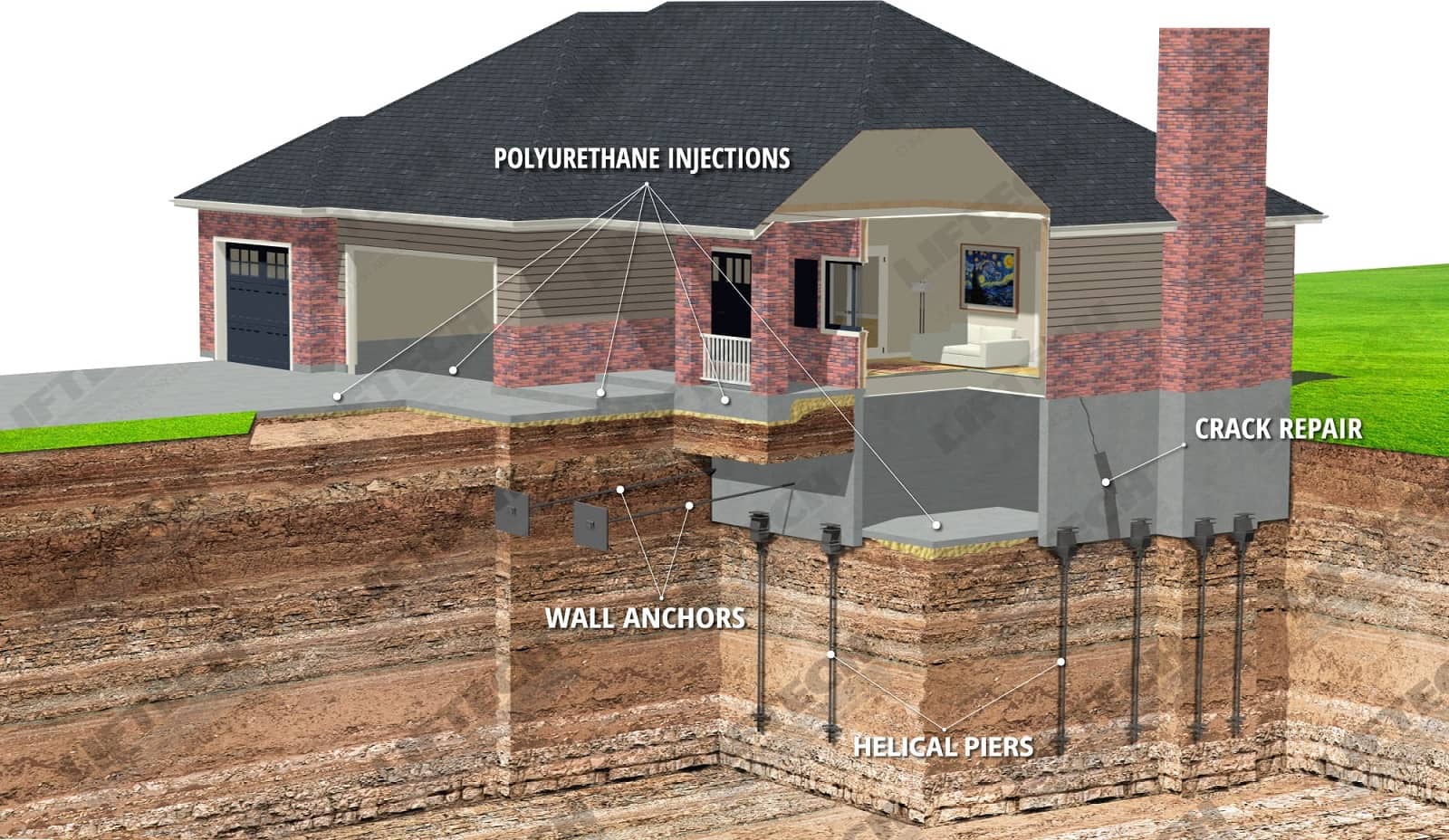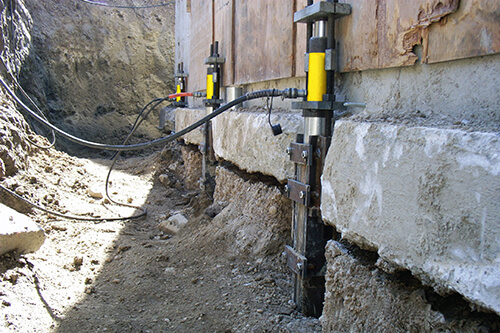Checking Out Various Approaches of Structure Fixing for Different Dirt Types
Structure repair work is an essential element of maintaining architectural integrity, specifically when thinking about the diverse difficulties postured by various dirt types. The complexity of dirt behavior under differing conditions demands a customized strategy to fix, ensuring optimum services such as helical piers for unsteady soils or chemical grouts for cohesive layers. The question continues to be: how do we determine the most effective technique for each one-of-a-kind situation? Recognizing the interaction in between soil characteristics and repair work strategies is critical, yet there is even more to reveal in the pursuit for sustainable options. What aspects absolutely dictate the choice of approach?
Recognizing Dirt Kinds
Soil kinds play a crucial role in the security and long life of structure foundations, making it vital for home owners and construction experts to comprehend their characteristics and actions. The communication between dirt and structure can figure out the architectural integrity of a building. There are several soil types, each with unique physical residential or commercial properties that impact how foundations are created and preserved.
Granular soils, such as sand and gravel, supply great drainage and are frequently taken into consideration stable. In comparison, cohesive dirts like silts and clays exhibit various actions.
Rocky soils, recognized for their stamina and stability, deal superb assistance for structures but might call for customized equipment for excavation. On the other hand, fertile soils, which are a balanced mix of sand, clay, and silt, usually supply desirable problems for foundation assistance as a result of their moderate water drainage homes.

Recognizing these soil kinds is crucial for selecting ideal foundation repair techniques, making certain the toughness and security of structures in time.
Challenges With Large Clay
Amongst the various soil kinds, extensive clay offers one-of-a-kind challenges for foundation security as a result of its tendency to undertake significant quantity modifications with moisture variant. This sort of dirt swells when damp and contracts when dry, which can apply considerable stress on structures. These fluctuations can lead to structure breaking, heaving, and negotiation issues, posing significant threats to the structural honesty of structures.
The difficulties with expansive clay are intensified by its plasticity index, which determines the soil's capacity to change shape and quantity. A high plasticity index suggests greater possibility for movement, boosting the likelihood of damage to structures. This is specifically problematic in regions experiencing extreme or frequent climate modifications, where cycles of wet and dry conditions prevail.
Additionally, the depth of extensive clay layers can vary, complicating the evaluation and preparation of appropriate structure fixing techniques. These intricacies require an extensive geotechnical evaluation to make sure efficient foundation repair methods are carried out, emphasizing the value of resolving large clay obstacles with competence and treatment.
Solutions for Sandy Soils
Sandy soils, identified by their big bit size and low communication, present unique difficulties for structure security due to their tendency for moving and disintegration. By securing the foundation to much deeper, a lot more steady soil layers, these systems can supply the essential assistance to counteract the changing nature of sandy soils.
Another recommended technique is the application of soil stablizing techniques. Chemical grouting, for instance, entails injecting a supporting representative into the soil, which boosts cohesion and decreases leaks in the structure. This procedure assists to strengthen the sandy substratum, therefore reducing the threat of disintegration and movement.
In addition, setting up proper drainage systems is critical in sandy dirt problems. Making certain sufficient water drainage can stop water accumulation around the foundation, which usually exacerbates erosion important site and dirt variation. Methods such as French drains or surface area grading can be employed to guide water away from the building perimeter.
Addressing Clearing Up in Loamy Soils
Fertile soils, known for their well balanced mix of sand, silt, and clay, provide a productive base for many structures yet can in some cases result in foundation settling as a result of their distinct composition. This balanced appearance provides exceptional drain and nutrient retention, making it ideal for agriculture and landscape design. This very same attribute can come to be troublesome for foundations, as shifts in dampness content can trigger the dirt to broaden or contract, leading to clearing up.
Exact dirt testing is critical to identify the certain structure and wetness content of the loam. When data is collected, implementing proper water drainage solutions is necessary to preserve consistent moisture degrees, consequently reducing the threat of dirt tightening or growth.

Cutting-edge Repair Service Methods
In the realm of foundation repair service, cutting-edge techniques are consistently being created to attend to the complex challenges postured by various dirt conditions. As dirt types vary considerably in their architectural residential or commercial properties, conventional methods may not always are sufficient. The introduction of brand-new innovations this contact form in structure repair service supplies extra customized options, making certain stability and long life.
One noteworthy technology is making use of helical piers, which are especially efficient in extensive or unstable dirts (foundation repair oklahoma city). These piers are screwed into the ground till they get to a stable layer of dirt, supplying strong assistance for the structure above. This method decreases interruption and is versatile to various soil types, making it a flexible service
Another cutting-edge strategy is the application of polyurethane foam shot. This technique entails infusing high-density polyurethane foam beneath the structure to fill gaps and maintain the structure. It is a less invasive choice to standard support, supplying fast setup with very little disruption to the surrounding area.
Furthermore, soil stabilization methods, such as making use of chemical grouts, have actually acquired grip. These substances improve soil stamina and reduce leaks in the structure, stopping future moving. Collectively, these cutting-edge repair work strategies provide efficient options for the varied obstacles posed by differing dirt conditions.
Final Thought

Foundation fixing is a vital aspect of keeping architectural stability, especially when thinking about the varied obstacles presented by various dirt types (foundation repair oklahoma city). The complexity of soil habits under differing problems demands a customized technique to repair, making sure optimum options such as helical piers for unstable dirts or chemical grouts for natural layers. By securing the structure to deeper, more secure soil layers, these systems can supply the needed support to combat the moving nature of sandy soils
Foundation repair work calls for cautious factor to consider of dirt types to ensure security and durability. Chemical grouts improve dirt toughness and minimize leaks in the structure in natural soils.